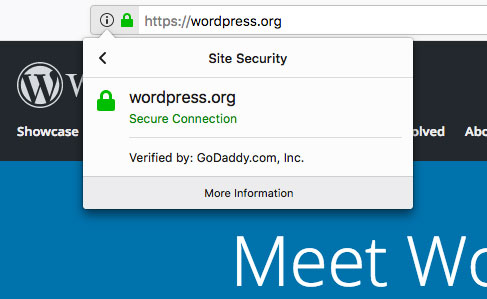Secure Sockets Layers, or SSL for short, are encryption protocols for use on the internet to provide certificate information and secure exchange of information. Some may refer to SSL as TLS or Transport Layer Security protocol.
These certificates offer to the user an assurance regarding the identity and authenticity of websites with which they are communicating. SSL may also be called TLS or Transport Layer Security protocol.
As seen in the image below, most up-to-date browsers allow users to click on the SSL icon (i.e., the lock icon) displayed in the address bar. Clicking the SSL icon lets the user view identification, certification, and other pertinent information about the website.

Not only limited to websites, SSL and TLS protocols are also used in SFTP, email, and many other internet technologies.
WordPress sites can benefit from SSL with the addition of an SSL certificate to the site’s web hosting plan. WordPress plugins are also available, and these plugins allow users to set up their SSL certificate information throughout their WordPress sites.
For most websites, SSL is used on Ecommerce websites and payment gateways. A lack of SSL indicates that the website may not be secure. Therefore, it is always important for a user to check that a website is secure before entering sensitive personal or payment information. You should never enter your bank account or credit card information on pages that are not secure.
Modern browsers like Chrome and Firefox will show errors and occasionally block rendering of pages on sites that are not properly secure.
← Back to Glossary
